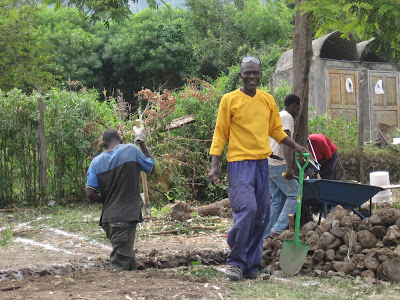The reason for doing all the soils tests was to determine which soils were appropriate to use for making the soil-cement blocks and tiles. Of course to produce the bricks and tiles we need a machine - a block press. Like most things in Kenya, it was not particularly easy to actually acquire this press. It took two trips to the mainland - one to transfer money and one to actually pick up the press and bring it back to the island. In fact the day we picked up the press we almost didn't make it back to the island. Elijah and I missed the last ferry to Mfangano and had to hitchhike with the machine that weighs about 300 lbs on a boat full of high schoolers.
night trip back to Mfangano with the machine an entire highschool
the next day we got together to install the press and begin making some test blocks and tiles
attaching the press to boards for stabilization
the Makiga block press
sieving
mixing and loading
Gabs referencing research articles to local skeptics (very proud moment)
By the second day we established who the block-making team would be and who does each specific task. The team is Mike, Elijah, Kelly and me. In a very short time we were able to get a good rhythm going and really start producing a lot of blocks.
the stack - getting bigger
to make the tiles, we use a wood block to reduce the depth of the machine
then we measure a specific amount of we mix and pour into the machine
smoothing out the soil before compression
once compressed, out comes a 1 inch soil-cement tile on a wood block
ready to me moved to the drying area
blocks and tiles are stacked
and labeled
we made over 400 examples in just 3 days with small mixes
(mixing takes longer than compressing and stacking)
the blocks are covered in plastic for curing
also, Elijah discovered a great alternative use for the block press





































































